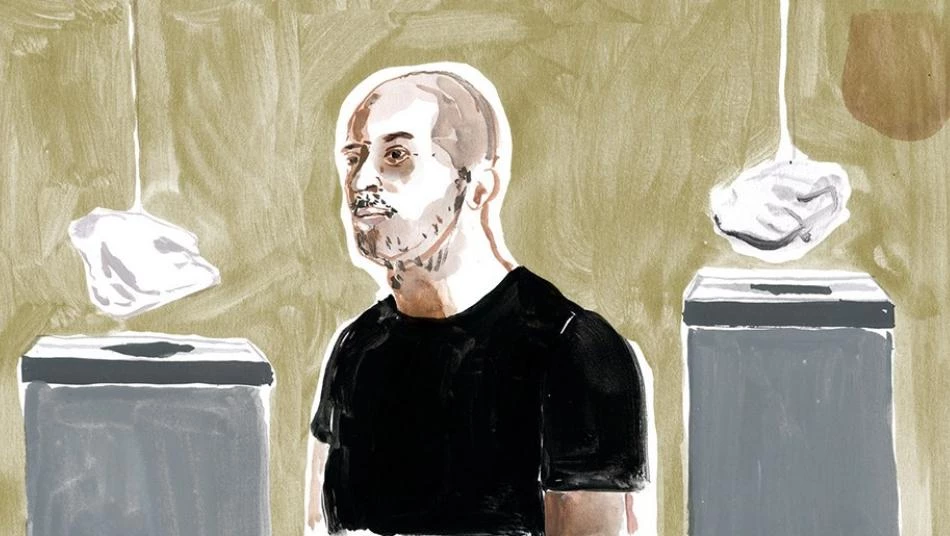Throughout my childhood in a Damascus suburb and in the Golan Heights region, I became familiar with various systems of oppression and how they affect whole communities. Later, during my compulsory military service, I spent three years forcibly painting the Assad portrait whenever requested; an experience through which I developed a clear grasp of how art can be leveraged in structuring cultural perceptions. Years later, after enrolling in and graduating from the Faculty of Fine Arts at Damascus University, I came to realise the limitations of the Syrian artistic scene, with all the propaganda and political oppression casting an unflinching shadow over free artistic expression of cultural producers in the country.
Driven by curiosity and willing to explore another world of perspectives, I decided to move to Europe, where I continued my studies in Denmark and later on in Germany. In 2013, I suddenly became a refugee, albeit by a different path than most of my fellow Syrians. Living, working and studying in Europe for several years, my student visa ran out, my Syrian passport expired, and returning to Syria had long ceased to be an option. Shortly after, I moved to Berlin—a vibrant capital city and multicultural hive—and found myself in the middle of a mini Damascus, a city-within-a-city populated by a community of displaced creatives facing challenges with which I was intimately familiar.
Since the Assad regime’s violent backlash against the Arab Spring protests in 2011, Syrian culture has found itself under constant threat. Many of the country’s artists, musicians and intellectuals have fled. Others have been imprisoned, tortured or murdered. What was once a vibrant, diverse cultural tapestry is being shredded from within. The world is bearing witness to a humanitarian and cultural catastrophe.
Syrian artists living abroad have newfound opportunities for unrestrained creation. They also face new difficulties. There is a market for Arab artists who deal with Islam, conflict and catastrophe; institutions and funders seek to and are often required to give space and money towards this work. While their efforts to demonstrate solidarity and raise awareness are laudable, with the road to international visibility paved only with this particular kind of narrative, it can be nearly impossible to imagine another route.
In 2017, motivated by my observation of these issues, I founded coculture e.V., an umbrella non-profit organisation that brings together projects aimed at sustaining the culture, identity and dignity of individuals with a forced migration background.
Among coculture’s initiatives is the Syria Cultural Index (SCI), which launches in the summer. SCI is an online platform dedicated not only to Syrian artists and cultural producers scattered all over the world, but also to institutions, galleries, museums and other parties involved in the international cultural scene. Beyond brokering professional opportunities through showcasing artists and their work, connecting them with opportunities and resources, the SCI will meet a less obvious but equally important need—that of reconnecting the cultural and social fabric of Syria. By virtually reconstructing the network that was once born from geographical proximity, it will relieve the pressure to make art the spokesperson for an entire region or nationality.
The Syrian Biennale, another one of coculture’s projects, will work in tandem with the SCI. Taking place every second year, this mobile exhibition will trace the path of the Syrian diaspora, the so-called "refugee route", taking place in a new city each time—beginning in Istanbul, Beirut and Berlin. The SCI will provide a preliminary snapshot of which displaced artists are active in each host city; based on that data, the Biennale will offer those creators a chance to show their work alongside local and internationally renowned artists.
Giving Spaces, coculture’s third initiative, is a Berlin-based project, revolving around sustainable architecture and the advantages of its application within modern communities. Focusing on ways to provide cheap, environmentally sustainable buildings to displaced communities, it also offers refugees meaningful, engaging work. The idea for Giving Spaces grew based on my experiences of countless conversations with refugees in Europe, who often have to engage themselves in menial labour in order to provide the means for sustaining their families. Through the project, they will be offered training and work opportunities, aiming to improve their economical and psychological wellbeing.
By Khaled Barakeh
Link to the original source of Vanity Fair



التعليقات (0)